HOW TO GROW ROSEMARY – Information Guide
This page is a introductory information guide for every beginner and herb garden lover about how to grow rosemary. This information is based on my own experience, seasoned with tips and tricks for indoors and outdoors herb gardening.
Content:
1. Rosemary Plant Data
Name – Description – Mature size – Bloom period and flower colour – Native area – Varieties
2. Rosemary Plant Care and Basic Requirements Information
1. Rosemary Plant Data
Name :
Rosemary (Botanical name : Rosmarinus officinalis)
Family: Lamiaceae
Common names: Salvia Rosmarinus
The name of ros marinus, the plant’s ancient name is is composed of two Latin words, signifying Sea-dew or dew of the sea; and indeed Rosemary thrives best by the sea.
Salvia rosmarinus is now considered one of many hundreds of species in the genus Salvia.
Description :
Rosemary is a strong aromatic evergreen, low shrubby herb plant that can easily be recognised by its aroma and its branches with leaves similar to pine needles. Rosemary is also a very decorative herb. I recommend it for every herb garden for its appearance alone.
The leaves (needles) are evergreen, 2–4 cm (0.8–1.6 in) long and 2–5 mm broad, green above, and white felt below, with dense, short, woolly hair.
Rosemary is a perennial who can last up to 30 years with little care. Therefor, together with its cooking values as a herb, I consider this shrub a must for every herb garden.
Rosemary is usually grown outdoors in the garden but it is also an interesting plant for the balcony, terrace and even indoors. Some rosemary varieties are ideal for planting with other balcony flowers, not only the normal, upright growing rosemary varieties, but also the hanging forms, which go well with other balcony flowers.
Rosemary was also one of the first herbs I started growing and experimenting with in my indoor herb garden.
Mature Size :
Depending on the species, a rosemary bush can reach a height of 0,5 to 2 meters (6 ft), but commonly one meter (3 ft).
A rosemary plant can live as long as 30 years. In nature the older bushes can grow wild as in the picture below.
Bloom period and flower colour:
The rosemary plant flowers in spring and summer (from April to July) in moderate climates, but the plant can be in constant bloom in warm climates.
In the area around the Mediterranean Sea, Rosemary also has a tendency to flower outside its normal flowering season, depending on the temperatures. It has been known to flower as late as early December, and as early as mid-February (in the northern hemisphere).
Flowers are white, pink, purple or deep blue. It can bloom from April to July, with beautiful flower colours varying from white, blue to pink.
Bees collect nectar from the flowers for the exceptional rosemary honey.
Native Area :
Rosemary is native to the Mediterranean Sea area and Asia, but is reasonably hardy in cooler climates. It can withstand droughts, surviving a severe lack of water for lengthy periods.
It thrives in areas close to the sea, hence the origin of it’s name which means “dew from the sea”.
Varieties :
There are a lot of Rosemary varieties, but you can basically divide them between upright varieties and ground cover varieties, in combination with the number of flower colours and the difference in height. To name a few: the fine-leaved, pink and white flowering, and hanging or half-hanging.
When you are growing Rosemary for cooking purposes, it doesn’t matter which variety of rosemary you use. All these species can be used for human consumption.
In this article I will just mention a couple of known varieties.
The original rosemary variety, Rosmarinus officinalis, is an upright variety, growing to about 1m (3ft) tall.
Another popular variety, suitable for small gardens and containers is the dwarf variety Rosemary Prostratus Capri. It is an example of a ground covering variety, also used in window boxes, or garden containers.
It is a winter hardy, fast-growing, prostrate (flat-lying) rosemary plant, which will grow to a height of around 5cm-10 cm (12in- 20in).
This variety is particularly loved because of its beautiful flowers and the dark green needles have a very attractive pine-like scent, are rich in aromatic oils and therefor well appreciated for use in the kitchen.
2. How to Grow Rosemary – Plant Care and Requirements:
Rosemary has always been the symbol of love, memory and loyalty. In ancient Egypt, rosemary was already a popular herb, from which then just as now both the flowers and the leaves were used.
Rosemary is a relatively easy to grow plant, both in pots, trays and in the open. The prostrate forms are attractive in hanging baskets and as ground covers where they are hardy.
Rosemary requires very little care throughout the year which makes it a fantastic herb to have.
Sun and light requirements for growing rosemary
Outdoors in the garden, the rosemary plants like a sunny spot all day long. Rosemary will tolerate light shade, but performs best in full sun.
Rosemary plants like plenty of sunlight and even when rosemary plants are brought inside or when they are grown inside, they like to get a sunny location.
Indoors they will often get not enough light. This means, especially in the darker period of winter, the rosemary plants are unable to produce enough energy to stay alive.
Soil requirements to grow rosemary
Rosemary plants are very tolerant of most soil conditions. However, they will not tolerate wet feet. This means it is best composed of a light and sandy soil, as long as it is very well-drained. Rosemary feedings needs are not high and easy to satisfy. It prefers a slightly limey soil (the opposite of acid) because this results in smaller plants with more fragrant leaves. The plant performs poorly in heavy clay soils, which are typically poorly-drained and usually fatal for rosemary in winter.
Once the plant is growing at its best, during the flowering period feed, it is good to give a regular fertilization. Once a month (from April to September) with a liquid fertiliser results in the best foliage for harvesting.
Watering requirements to grow rosemary
All plants need water to grow, but especially rosemary doesn’t need much water and is actually very drought resistant.
Rosemary likes a sunny, not too moist growing place.
Water only when the compost or ground is clearly dried out.
Overwatering
If the tips of the green needles are turning brown, then this is a sign of overwatering rosemary.
Overwatering rosemary will kill the plant, because the roots will start to rot which ends in a dead plant. The best reaction when you see these brown tips is to stop watering immediately and allow the soil to dry out completely before you water again.
If an outdoor rosemary plants shows signs of overwatering, you should have same reaction, stop watering and make sure your rosemary isn’t getting extra water.
Temperature requirements and cold tolerance for growing rosemary
As mentioned, rosemary origins from the moderate climate of the Mediterranean Sea, where it likes a sunny, not too moist growing place. This means that in harsh winters, it requires some protection or sheltered conditions. It can stand severe frosts and cold winter conditions as long they are not windy and wet at the same time.
It is generally said that rosemary is not hardy in zone 6 or colder. Plants grown in a pot are generally more sensitive to frost than planted specimens, and younger plants are more vulnerable than older ones. The young plants will only be completely hardy in the third year. Before that time, they need some protection in the winter.
My advice is to overwinter rosemary plants, kept in containers, indoors. Although many herb gardeners have reported that rosemary plants have survived in containers outdoors, it is wise to conclude that depending the variety, rosemary can stand frost and winter conditions as long as they are sheltered from icy winds and the plants are not wet. If the pots stays outside, you should provide it with shade especially in the winter. If it is still standing in the sun with frozen soil for a long time, drought damage can easily occur.
So if you have the possibility to give the rosemary plants in containers some shelter and protection, I would advice to do just that.
Not everyone has the possibility to bring planted containers indoors, in a sheltered light spot indoors.
How to overwinter Rosemary in pots indoors?
I you have the possibility, what is the best way to proceed?
Here are some attention points:
- If the plants are to be brought indoors it is suggested that they be planted in containers for outdoor use and not planted in the ground. Rosemary plants grown in the garden do not transplant very well. So, to minimize chances of losing plants being dug up and moved indoors, it is suggested that they be treated as container plants for the patio or porch.
- The plants in pots can be left in the garden into the fall and brought in just before a frost occurs.
- Once indoors, rosemary prefers a cool (even cold, best kept indoors at a maximum temperature of 10 degrees Celsius) sunny location, with as much light as possible, where the humidity is high.
- Rosemary may dry out quickly in an indoor growing environment usually leading to brown leaf tips and die-back. My advice is to place them on pebble filled saucers filled with water helps to increase humidity around the plant and reduce foliage damage. Frequent misting is also helpful.
- Rosemary also does not do a lot of growing during the low light, cool days of winter. Be careful, to not overwater the plant because this can lead to root rots and loss of the plant.
The art of growing a fast and healthy rosemary consists mainly of good care in winter.
Harvesting and pruning
We talk about harvesting when we will cut off leaves for using them in a drink or in a cooking dish. We talk about pruning when we mean trimming the herbs by cutting away dead or overgrown branches or stems, especially to encourage growth, faster and healthier.
Harvesting
Harvesting can be done all year round, in summer the taste is usually the best. Harvesting rosemary is as easy as cutting some young shoots or tops off the rosemary plant. The fresh cuttings are ready for use in the kitchen. Usually people only harvest what is needed at that moment in the kitchen. But if you need larger quantities of rosemary for, for example, the barbecue or other preparations, you may need to cut longer shoots but always leave 10 cm of leafed stems so that they can shoot out again.
When the rosemary plant is flowering, you can also harvest the flowers selectively if they are fresh and open.
Pruning
When the plant has become large or too large, you can prune it.
My advice is to regularly prune back every upright growing rosemary plant by trimming the side stems to keep the plant to the size you want. This is preferably done after the winter (in March or April) or another option is just after they have flowered. Always keep sufficient green parts and shoots when pruning.
Rosemary can grow quite large and retain attractiveness for many years, can be pruned into formal shapes and low hedges, and has been used for topiary.
Propagation
Plant propagation is the process which grows new plants from a variety of sources: seeds, cuttings, and other plant parts. Propagating rosemary is an exercise in patience.
The growing period up to frost-sensitive young plants is more than 2 years for seedlings and cuttings. The upside is that we know that the plant can live as long as 30 years.
Below you can find general guidelines for sowing and cutting rosemary plants.
Seeds
- Rosemary can be sown, best in the greenhouse or greenhouse or indoors, from the end of April or the beginning of May at a temperature of 15 to 20 degrees Celsius.
- Use well-drained sowing soil with a lot of sand for this, the seedlings do not tolerate wet soil.
- When the plants are 2 to 3 centimeters in size, plant them in pots with potting soil and water them moderately.
- Once large enough, about 10 to 15 centimeters, you can plant them in the garden.
- Take notice that in general :
- the seeds are often difficult to start, with a low germination rate and relatively slow growth
- seeded rosemary is weaker and less hardy than cutted species.
- In warmer climates, you can also sow outdoors in full ground from mid-May to early July. The seeds will only start to germinate after a month.
Cuttings
There are basically three methods used for growing rosemary cuttings.
You can find more details about these methods and read about my experiments in this article: How long does it take for Rosemary cuttings to root?
The ideal time to plant out rosemary outdoors is April.
Problems
Rosemary is often a difficult plant to overwinter indoors. Watch out for aphids, mealybugs, whiteflies and spider mites on indoor plants, if present, can be controlled with a spray of insecticidal soap.
Rosemary is susceptible to powdery mildew, particularly when air circulation is poor. Powdery mildew is a fungus that can develop where the air is humid and good circulation is lacking. Powdery mildew is an indirect symptom of overwatering.
You can easily recognise the fungus as a white powderlike substance on the leaves. When the disease advances, rosemary may drop leaves prematurely. The best way to prevent powdery mildew is to plant rosemary in a bright sunny area in rocky dry soil.
Counter these conditions by keeping indoor plants and air somewhat dry and remove the leaves affected by mildew.

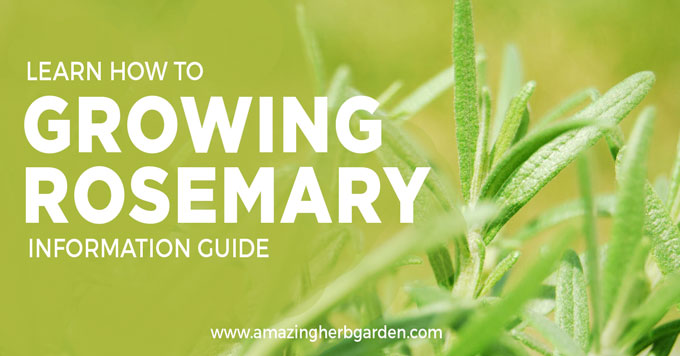
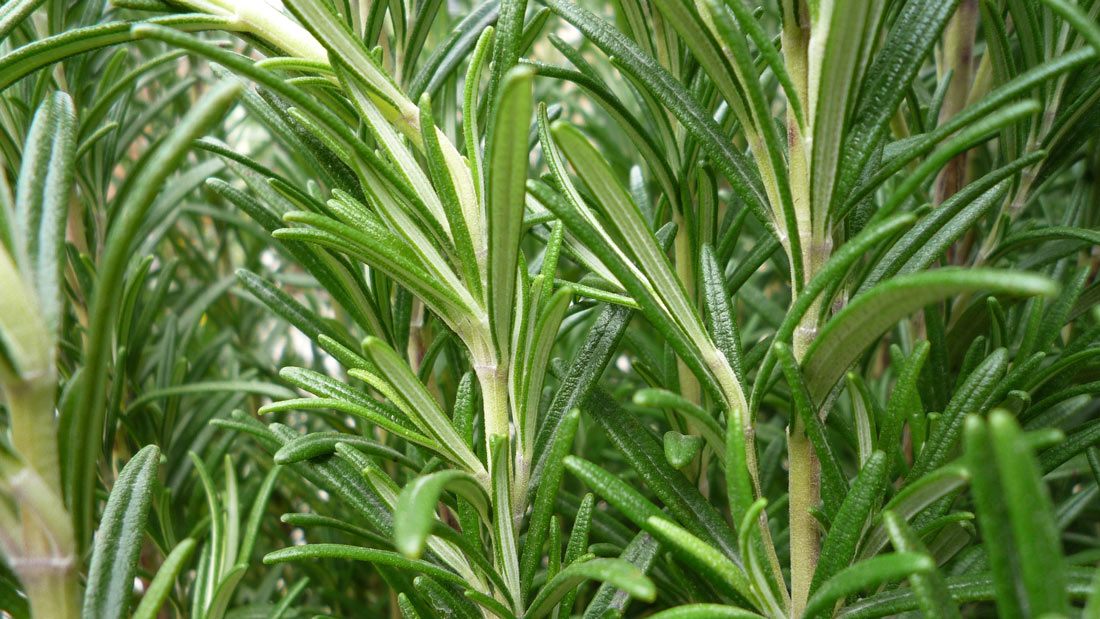

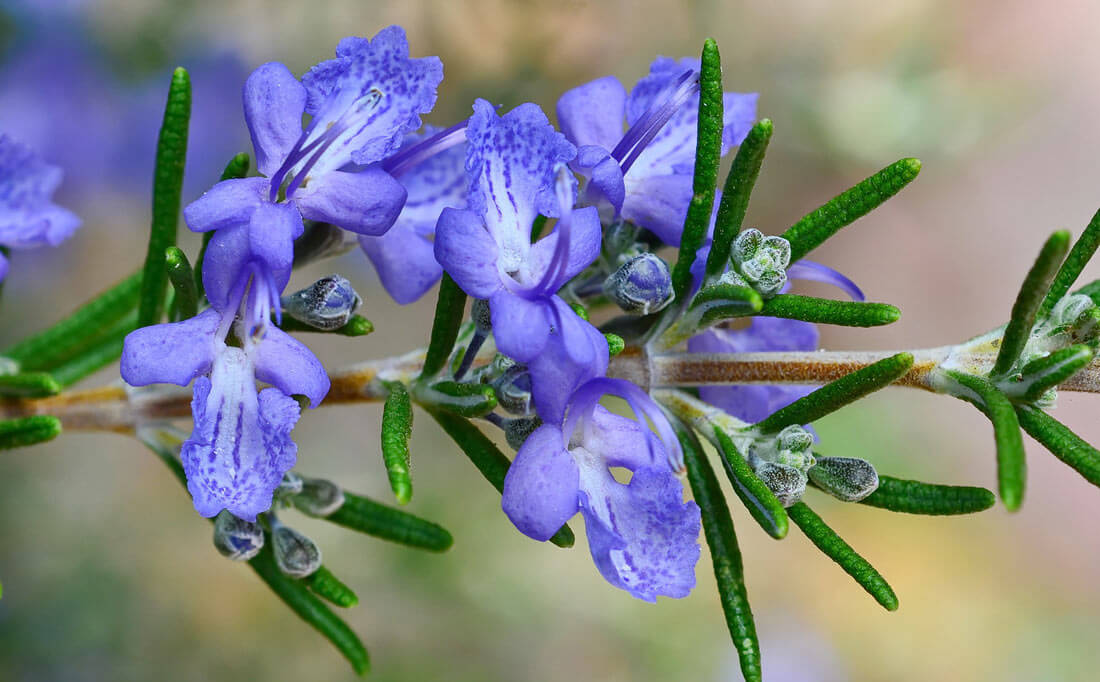
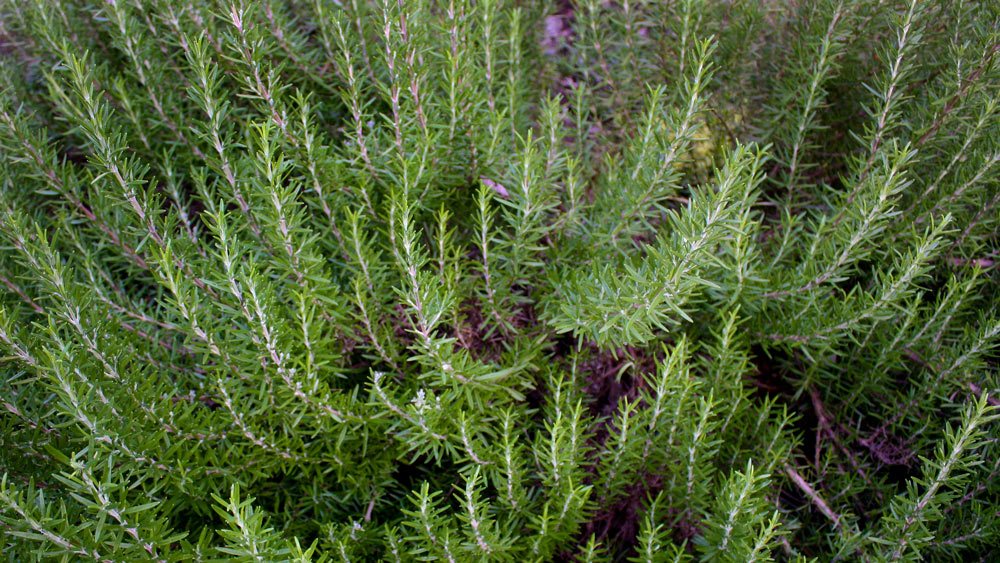
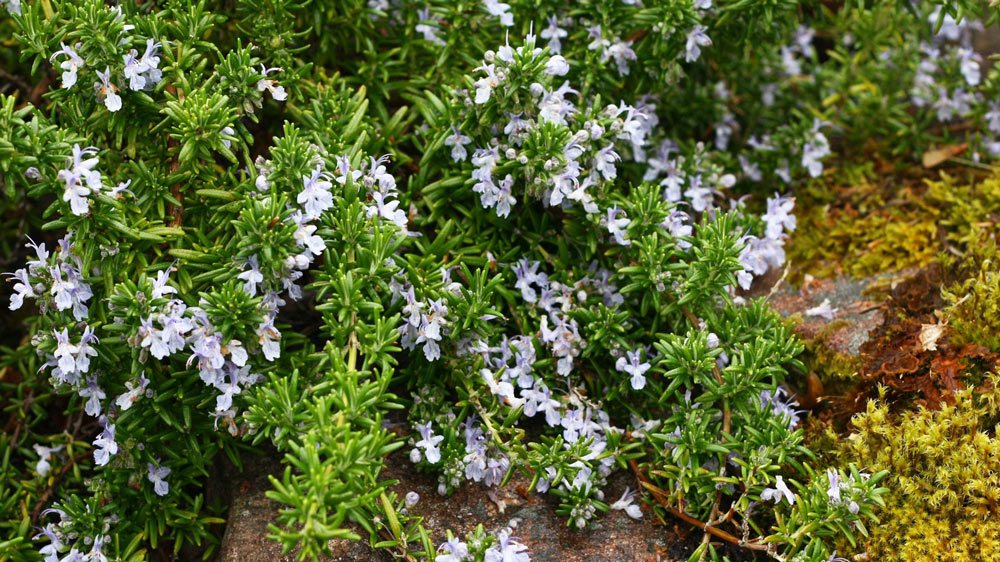
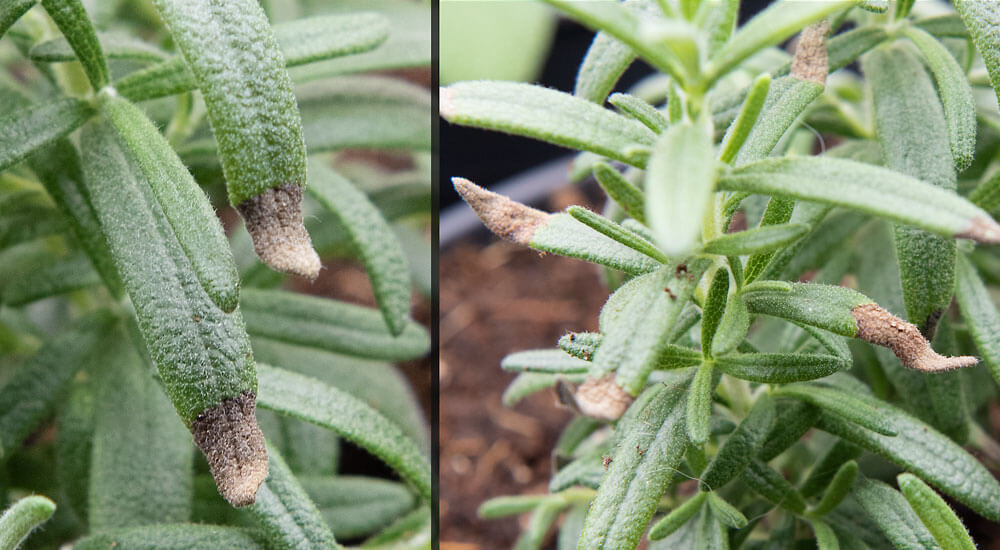
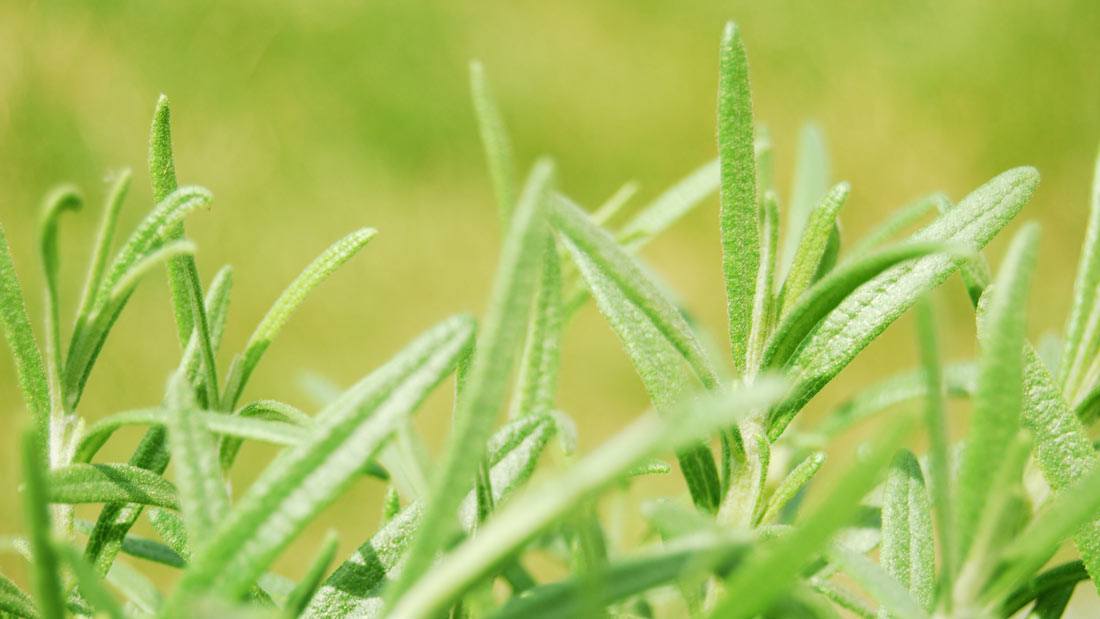
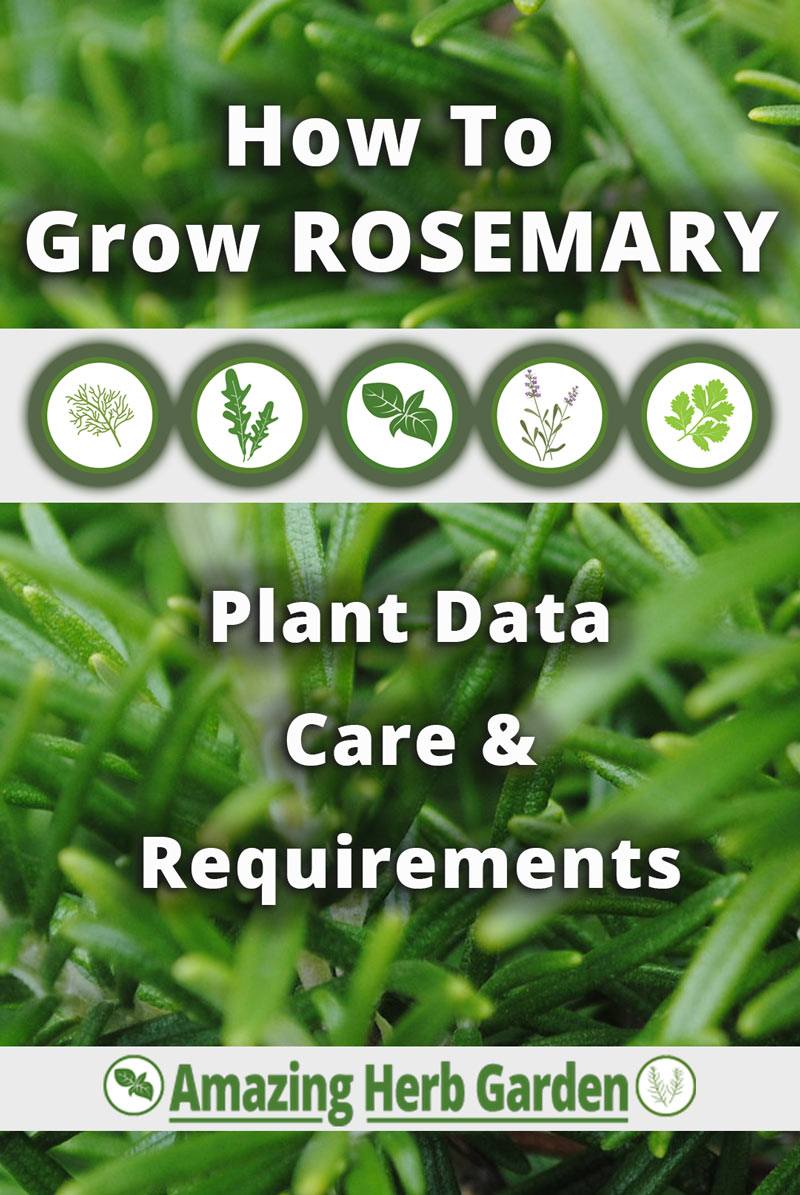
Join the community
If you are looking to grow an amazing herb garden, I strongly recommend signing up to our community and gain access to our FREE downloads and regular updates. We want to ensure your success by sharing our tips and tricks with you for growing herbs.
SUBSCRIBE
Good luck in growing your rosemary plants. Feel free to add your experiences in the comments below.